There is a lot of confusion in the ADA on what clearances and elements are allowed to overlap each other. The main idea for restrictions to having elements overlap is the inability for a person in a wheelchair to use the element or the space efficiently. The amount of clearance that we design by translates to the amount of space that should be provided for one wheelchair. Floor clearances are not fixed elements and if they overlap each other it does not impede the usage of the clearance. But if a fixed element overlaps the clearance, that might reduce the clearance and prevents a person from using the element.
In addition, there is a confusion about protruding objects and elements that are overlapping the clearances of plumbing fixtures.
This newsletter will explain which elements can overlap since they don’t impede the usage of the space or element, and which ones may not overlap. All the rulings are taken from the 2010 ADA Standards.
Fixture clearances and turning space
In a toilet room, the floor space and other clearances including the turning space can overlap each other.
603.2.2 Overlap . Required clear floor spaces, clearance at fixtures, and turning space shall be permitted to overlap.
As was explained in the introduction, the clear floor space of the plumbing fixtures are not fixed elements. When we show them in plan it is a depiction of where a wheelchair can be in order to utilitize the fixtures. Therefore those clearances can overlap without preventing a wheelchair to utilize or manuever around the fixtures.
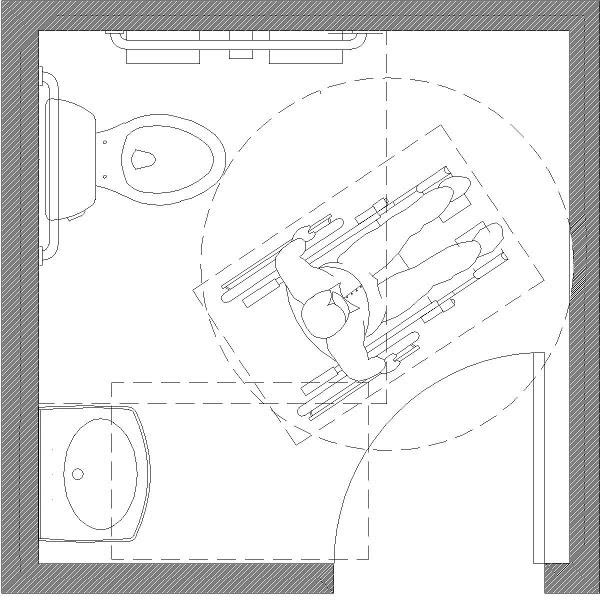
The drawing above shows the turning space overlaping the clerances of fixtures and the door clearance can also overlap the turning space. This turning space is essentially a representation of where a person in a wheelchair could use to turn, but it is not a permanent element. The drawing is also showing the lavatory and water closet clearances that can also overlap.
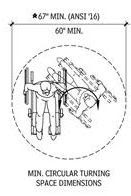
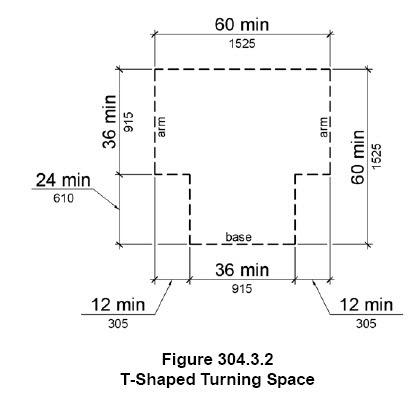
Clearance around a water closet
Toilets require a minimum of 60″ wide x 56″ depth clearance in order for a person in a wheelchair to transfer onto the water closet. The clearance must not be obstructed. There are only certain elements that are allowed to overalp the clearance:
- the water closet
- associated grab bars
- dispensers*
- sanitary napkin disposal units,
- coat hooks
- shelves
- accessible routes
- clear floor space and clearances required at other fixtures
- the turning space
Per the 2010 ADA Standards for Accessible Design:
604.3.2 Overlap. The required clearance around the water closet shall be permitted to overlap the water closet, associated grab bars, dispensers, sanitary napkin disposal units, coat hooks, shelves, accessible routes, clear floor space and clearances required at other fixtures, and the turning space. No other fixtures or obstructions shall be located within the required water closet clearance.
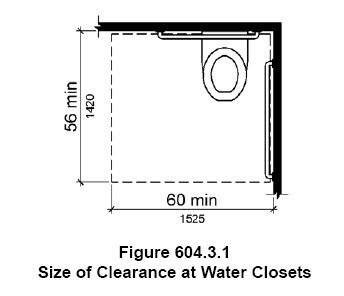
*Clearance around a water closet
*The part of the section that is not clear is the “dispensers”. We think of dispensers in a restroom as soap dispesers, paper towel dispensers, femenine napkin dispensers for example. So if the list includes “dispensers” we may be inclined to provide those within the clearance of the toilet. You might want to check with the AHJ at your State, but in Texas the AHJ (TDLR) came on record as stating in their
Technical Memo 2013-17 that the word “dispenser” is describing those associated with the toilet and therefore any other dispenser is not allowed to be inside the clearance of the toilet.
This toilet in the picture above had a soap dispenser that overlaps the clearance which it is not allowed
This toilet in the picture above had a paper towel dispenser and waste receptable that overlaps the clearance which it is not allowed. Note that the paper towel dispenser was recessed in the wall and did not overlap the clearance. if the element is completely recessed it is not considered overlapping.
The picture above had a lavatory overlapping the clearance of the toilet. Remember that the clearance includes the overhang of the counter.
The picture above had a urinal overlapping the clearance of the toilet.
“But it is less than 4 inches”
Some of my clients conflate the “overlap” rule and the “protruding object” rule. They think that as long as the element projects less than 4″ from the wall then it is allowed to overlap the clearance. Those are two different requirements:
The protruding object rule is for people who are visually impaired that cannot detect objects mounted in their circulation path and could get hurt. So the standards suggests that if there are any objects located on a pedestrian circulation path that it should not project more than 4″ onto that path.
The clearance around the toilet rule is for people in wheelchairs to provide a clear space for them to transfer on. the US Access Board did their research and determined that any object (no matter how big or small) inside the toilet clearance makes it difficult to transfer onto the toilet.



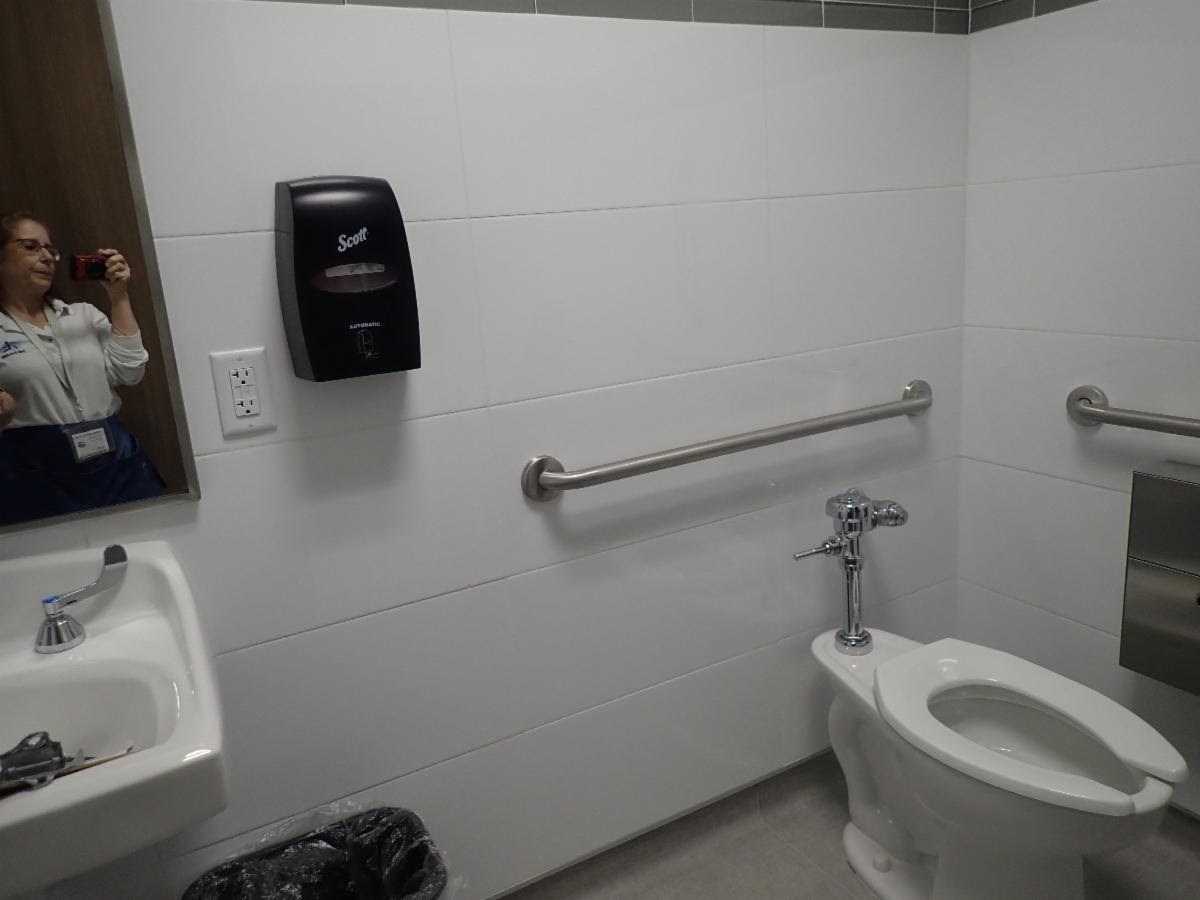
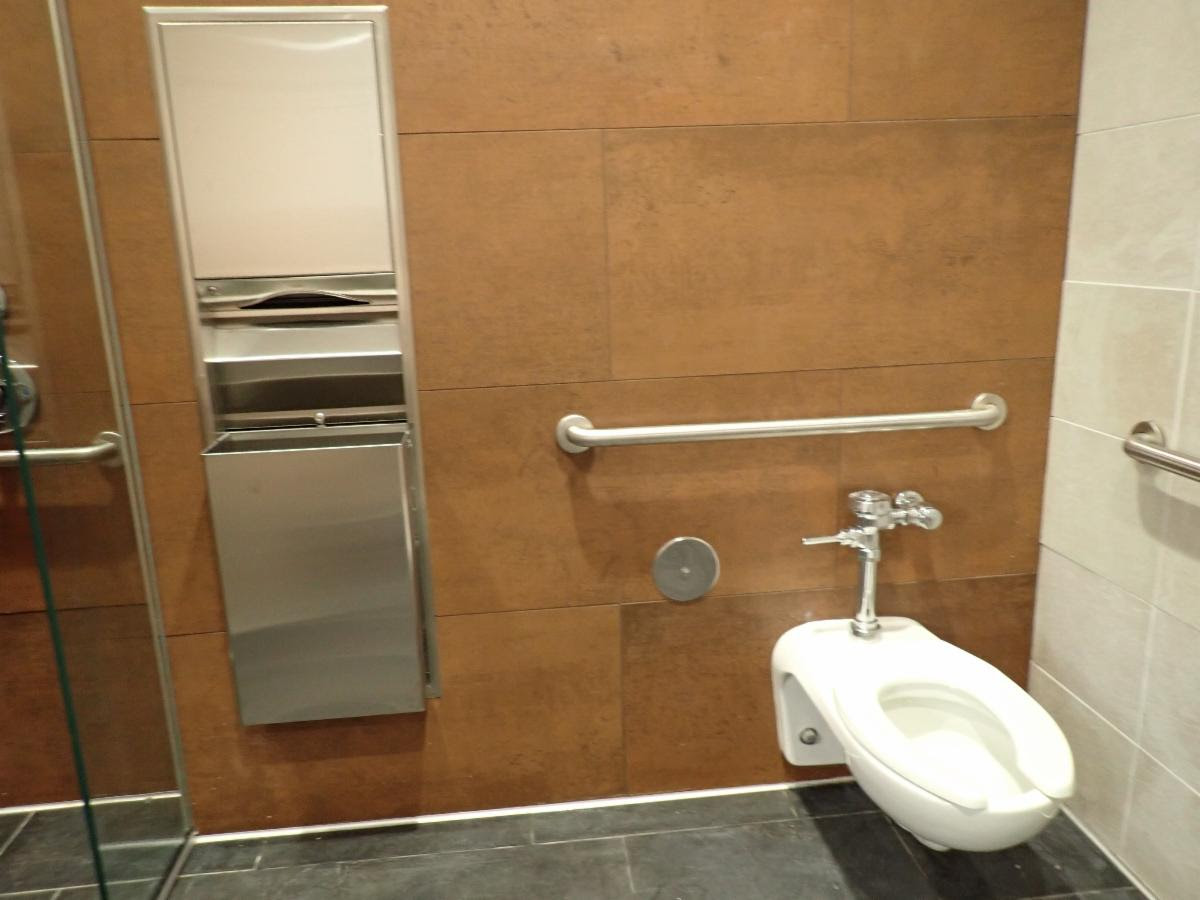
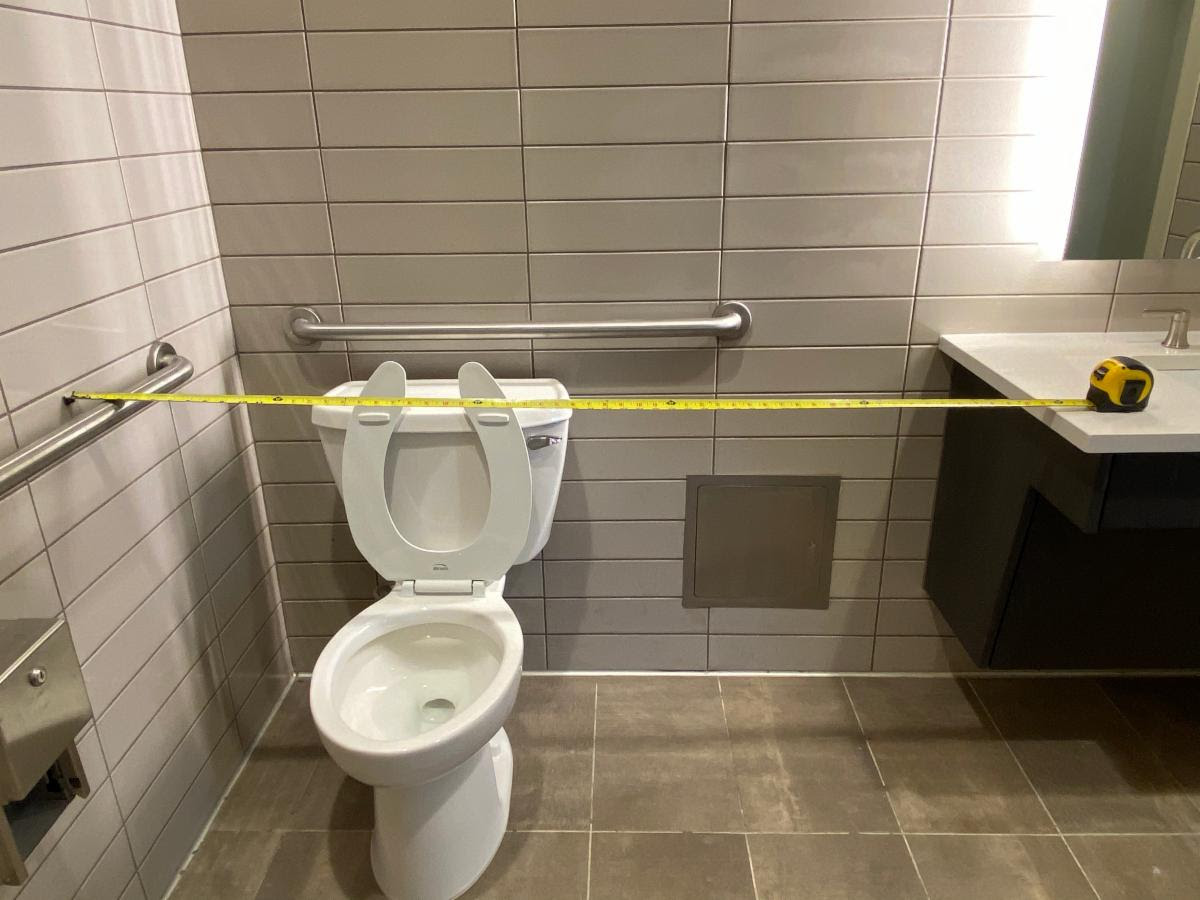
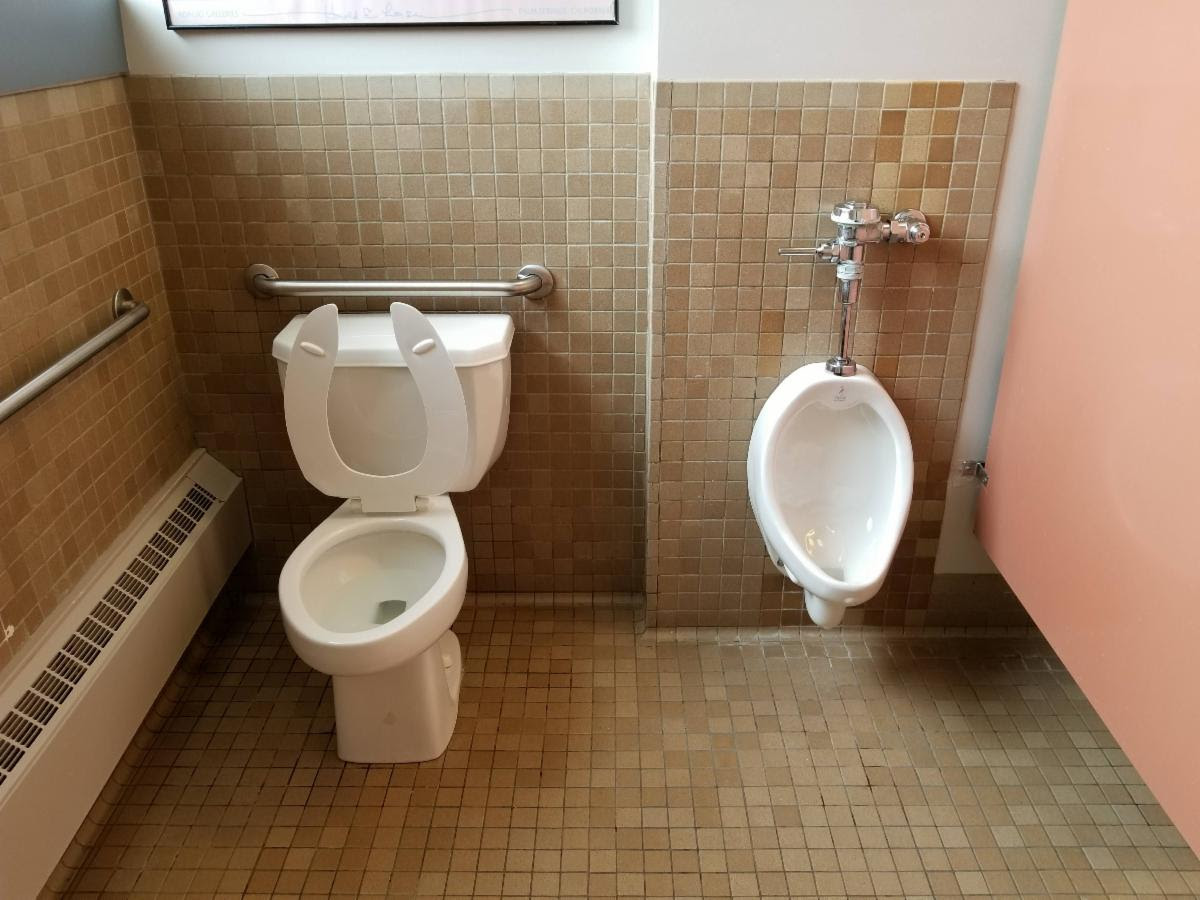
 Abadi
Abadi 

